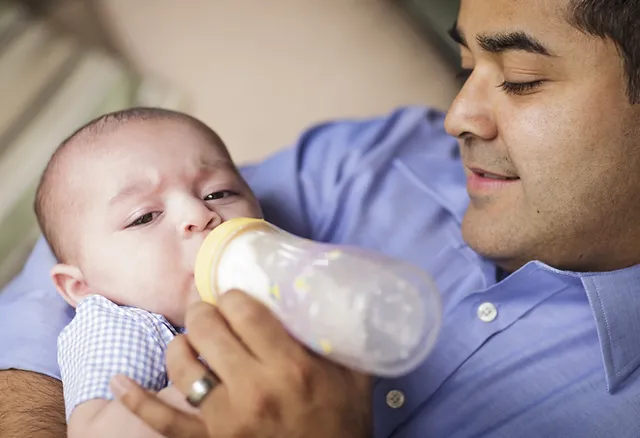Not all mothers can feed their newborns with breast milk. This may happen because of various reasons. Some mothers cannot produce enough amount of milk or cannot produce it at all; some have to take medicine, so breastfeeding is disallowed; some may have health issues; others may not want to feed babies with breast milk. This is when an organic formula will come to their aid. It is close to the mother’s milk, and it provides the newborn with everything the little one may need for appropriate growth and development.
Partial Weaning
This method can be used when you intend to continue breastfeeding, but also require a supplement baby formula for special occasions. The word “partial” can already tell you a lot about this method. It means that you need to interchange breastfeeding and bottle feeding. This is the method that is taken the easiest by all babies. They can still have breast milk and offering a baby formula runs less painfully to them. This is also the fastest way to go from breastfeeding to using a bottle with baby formula.
Gradual Weaning
This is another great way to make a transition from breastfeeding to bottle feeding smoothly. The main method is to give your baby less amounts of breast milk every day. You should fulfill all the reductions steadily without haste. Replace the amounts the baby didn’t receive this day with a baby formula.
Mind that it’s possible to give breast milk and baby formula in one bottle. It is a safe combination if you know what you’re doing. You should consult an expert in this field to be sure the ratio of breast milk and baby formula is safe for your baby.
Switching Cold Turkey
This is the last major method of going from breastfeeding to feeding with a bottle. It is not generally recommended by pediatricians and nutritionists. Nonetheless, it is justified in definite situations. This is an abrupt transition when there is no possibility to give your baby mom’s milk anymore. It may induce a lot of stress on the baby. In case you have been giving breast milk via bottle since the baby’s birth, the transition to a baby formula will run smoothly and quickly.
How to Deal with a Bottle Refusal?
All parents should be aware of the fact that their babies may refuse to take a bottle if they get used to breastfeeding. It may happen because they like the way breast milk tastes, they do not understand why they should suck through a bottle, or they do not feel their mother’s skin and smell. Luckily, bottle refusal can be handled. Here are a few tips to follow:
- The wrong temperature. Check the temperature of the formula and change it if your baby refuses to suck it.
- Is it really hungry? Be sure your baby is really hungry because some parents feed their babies too often, even when they don’t want to eat.
- Is mother close? A baby may refuse to eat from a bottle because the mother is out of sight or the baby cannot smell her. The baby needs time to get used to it, and the mother isn’t always near when he/she eats.
- The wrong position. Be sure you apply the right position for feeding via bottle.
- Change bottle types. You should never forget that there are different types of bottles. Your baby may not want to eat because the type is inconvenient.
Stick to these rules, and you will be able to handle the issue of bottle refusal. After all, all babies can be taught to nipple from a bottle.



